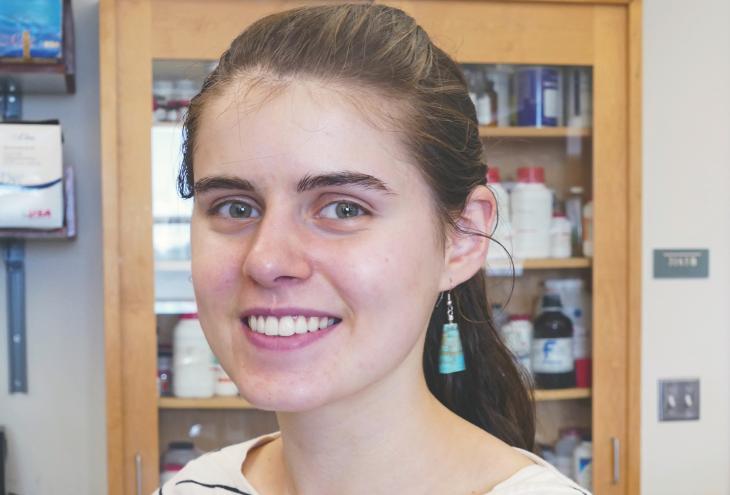As a 12th-grader at Menlo-Atherton High School in Northern California, Anna Quinlan is a little preoccupied. What senior isn’t? But here’s the thing: It’s all about science — heady stuff like helping people manage Type 1 and 2 diabetes through her very own invention, a low-cost, closed-loop insulin pump. She calls it an “artificial pancreas,” a breakthrough that won her the Grand Award in the 2018 National American Indian Virtual Science and Engineering Fair (NAIVSEF) sponsored by AISES.
So she’s not your typical teenager, and Quinlan’s OK with that. Perhaps it was to be expected from someone who taught herself to code in her tweens and got a job at the local Trader Joe’s to help pay for extracurricular biomedical and engineering experiments. For Quinlan, scientific research isn’t a hobby — it’s very much linked to real life and results. She sees her focus on diabetes as important. “It’s a chronic disease with a high prevalence in people of lower socioeconomic backgrounds,” she explains. “And the tools these people need to manage their diabetes are often out of reach because of the cost.”
Quinlan’s passion for STEM emerged early on, and by the time she got to high school, she was branching out on her own in a makeshift lab at home with one research project after another. In eighth grade she discovered AISES through a Native outreach program run by nearby Stanford University. “When I learned about AISES and the Science and Engineering Fair, that was it,” she recalls. “I knew right then that I wanted to be part of AISES and have the annual fair as an outlet for my work.”
Getting to know the AISES community was also important for Quinlan’s broader outlook. “Beyond my brother and me, there aren’t many Native students at my high school. So having AISES in my life has made a huge difference,” she says. “My mother is Cherokee, and when we visit her family in Kentucky I get to feel more connected to my heritage. It’s also great to feel that stronger connection closer to home.” In fact, when she goes to college (no decision yet on where), Quinlan may opt for a minor in Native American studies while pursuing a major in biology — and why not, maybe a second major in computer science.
Quinlan’s summer project this year was investigating the mechanisms of Type 1 diabetes resistance in a particular strain of nonobese diabetic mice. She was selected to conduct that research as part of the prestigious Summer Student Program at the Jackson Laboratory, a nonprofit biomedical research facility based in Bar Harbor, Maine. “Its mission to promote better health care through genetic research is really opening my mind to all kinds of possibilities for my work moving forward,” she says.
The internship was the latest in a series of honors for Quinlan. That list includes an Intel International Science and Engineering Fair second-place Grand Award, a Rachel Carson Book Award, a Stanford University internship, multiple NAIVSEF awards dating back to 2016 — and to round things out, a handful of art show awards for street photography. “I love how photos can capture a single moment in time and preserve it forever,” she says.
Quinlan is currently focusing on immune cell populations, exactly how Type 1 diabetes develops, and the impact of certain genes in slowing or preventing the development of the disease in mice. It’s advanced work for anyone, and especially for a 17-year-old. But for Quinlan, it’s part of everything coming together after a lot of work and determination.
After all, this scientist has plans. “I think my dream job would be working as a physician investigator for the Indian Health Service, maybe an endocrinologist researching diabetes in Native communities,” she says. “There’s something very compelling about the intersection of access to nutrition and medical care and socioeconomic circumstances.”
But for now, she has other work to do. And there’s that matter of being a senior in high school. One thing is certain: Anna Quinlan is on her way.













